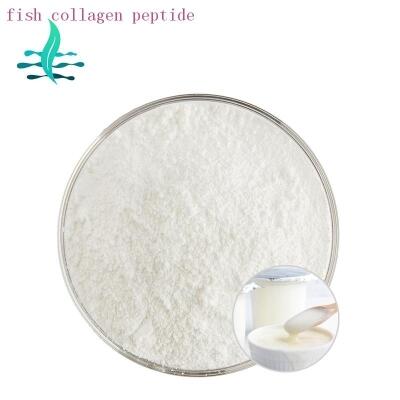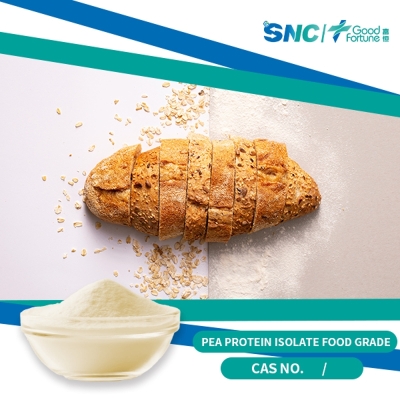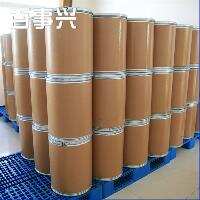Amino acids: the steady development of large varieties of small varieties of international market prospects are good.
-
Last Update: 2020-07-30
-
Source: Internet
-
Author: User
Search more information of high quality chemicals, good prices and reliable suppliers, visit
www.echemi.com
;.China has become the world's largest production of amino acid raw materials, annual output of various amino acid raw materials in more than 2 million tons. However, China's amino acid raw material production is still in a large but not strong state: glutamate, lysine and other "big varieties" have occupied the main international share, and such as methionine in the international market best-selling "small varieties" but still failed to "out of the top".large varieties: continue to steadily promote thefrom the output point of view, China's annual production of glutamate ranked first in the world, annual production capacity of more than 1.8 million tons, the actual output of about 1.6 million tons. Second, lysine, the annual output of about 600,000 to 700,000 tons. In contrast, the best-selling methionine in the international market in China's amino acid industry is a "short leg", so far, the total domestic production of only a few thousand tons, while the domestic market methionine demand is as high as 100,000 tons. In view of this, the domestic large companies in cooperation with French companies, is preparing to build an annual output of 100,000 tons of methionine production line, once completed and put into operation, China will become the international major producer and exporter of methionine.glutamatein 2008, China exported about 110,000 tons of glutamate. This figure was achieved under the continued monopoly of the international glutamate market by Japan's Miso Co., Ltd..it is understood that Japan's Miso Co., Ltd. had expected China to become Japan's biggest competitor as early as a decade ago. Because of the huge corn production in China and the labor cost is much lower than in Japan, japanese companies adopted the "going out" strategy, their glutamate fermentation base early to Indonesia, Thailand and Brazil and other tropical countries rich in sugar cane, and the use of the local sugar industry after the sugar extraction of a large number of "sugar cane molan" by-products as raw materials, fermentation method production glutamate, so in production costs and prices can still compete with China's corn starch-based raw materials. And its glutamate a large number of exports to North America, Europe and Southeast Asia markets. China's production of glutamate can only be sold at low prices in Europe, Singapore and Hong Kong and Taiwan, China. In a short period of time, China's glutamate exports are subject to the situation of Japanese miso co., Ltd. temporarily difficult to change. Fortunately, China has a huge domestic MSG consumer market, so the domestic glutamate industry prospects worry-free.lysinelysine is our country has completely played a "turnover war" of amino acid large varieties of raw materials products. In 2007, the total domestic lysine production has reached more than 650,000 tons, the total output of the country is expected to reach 890,000 tons in 2010..in recent years, China's lysine export volume has always been maintained at about 300,000 tons, equivalent to half of the actual domestic output, therefore, lysine has become the number of domestic exports of amino acid products. It is reported that in previous years, China's lysine export market is mainly in North America, in recent years, China's lysine exports have turned to the Southeast Asian market. Because countries including Vietnam and Thailand have become the fastest growing breeding industry in Southeast Asia, the relevant departments believe that the annual demand for lysine in Southeast Asia is 80,000 to 100,000 tons, and the region does not have lysine producers, all lysine is dependent on imports. China's Guangxi and Other Provinces and Southeast Asia are geographically close, so the export of lysine to Southeast Asia has a price and geographical advantages. Southeast Asia is expected to become China's largest lysine export market.cysteineis the only amino acid product of all 21 amino acid apinics that does not use microbial fermentation or synthesis. It is understood that the main production of cysteine raw materials for human hair or pig hair by hydrolysis hydrolysation of hydrochloric acid extracted. Since the 1950s, China has been the world's largest producer and exporter of cysteine. China's export cysteine production accounts for about 80% to 85% of the international market. Developed countries, including Europe, the United States and Japan, rely on Chinese exports of cysteine raw materials..it is known that cysteine is a very popular pharmaceutical raw materials in the world, such as cysteine can be combined with glycine, glutamate and other amino acids to synthesize glutathione, the latter is an important antidote and eye medicine, its clinical demand is great. Recently Danish medical researchers reported that clinical trials have confirmed that oral cysteine can effectively prevent digestive tract tumor diseases (such as stomach cancer, esophageal cancer, etc.). Now Danish food manufacturers have found that the cysteine raw materials directly added to chewing gum and other popular products. The Danish researchers' research has made cysteine an instantacysteine an instantastmicity new best-selling product in the international pharmaceutical market, with estimates that sales of various health foods based on cysteine will increase by at least twice as much in the next few years as they are today. . the best-selling cysteine is bound to boost the production and sales of its raw material, cysteine. In recent years, China's annual export volume of cysteine has always been maintained at about 3500 to 4000 tons. The main export market for Europe, the United States and Japan and other developed countries. About a few years ago, Japan and the United States worked together to transform industrial microorganisms with recombinant DNA technology and ferment editine as a bacterium, but it is understood that this technology has never been successful, otherwise China's cysteine export prospects will be extremely difficult. . can be sure that in the next few years, China's use of traditional process production of cysteine raw materials export prospects will continue to be optimistic. Coupled with important scientific discoveries by Danish scholars, it is expected to greatly boost the sale of raw materials for cysteine products and the export growth of cysteine APIgs. This year and next, China's cysteine exports to Europe and the United States will increase significantly, the largest export volume is expected to exceed 5000 tons. . nextPage. Susine China's production of susine started late, but the development of rapid, to 2005 the total domestic production of susine has reached about 20,000 tons. And the relevant departments forecast that in 2010 China's market demand for susine will reach 60,000 to 80,000 tons, so the market gap is larger. . the gratifying news is that Jilin Dentons Group a few years ago successfully introduced foreign advanced sucone production technology after digestion to build the first large-scale sucone production plant, the current annual output has reached 10,000 tons, and 50% of the products exported to the United States and European markets, thus breaking the long-standing deadlock of China's Susine raw materials "only into" deadlock. . it is understood that the main domestic manufacturers of susine raw materials in addition to the dacheng group in the north, located in Jiangnan, Zhejiang Zhangzhou Guoguang Biochemical Co., Ltd. sunine annual production capacity is also more than 5000 tons. Several other production of smaller sunine producers are located in Wuxi, Tongzhou and Zhangjiagang, Jiangsu Province, but its annual production of susine is relatively small, annual production capacity of about a few hundred tons to 1,000 tons. . with the steady growth of China's production of susine, it is expected that in 2009 China's annual production of susine will reach 28,000 to 30,000 tons, and the export of susine raw materials will account for about 1/3 of the annual output. small varieties: sales prospects are good taurine taurine has become a best-selling product in the international market. According to foreign medical researchers reported that taurine can enhance muscle strength and eliminate human fatigue, so most of the foreign use for the preparation of the market for the market sales of sports beverage products. In addition, taurine can also be used in the preparation of infant milk powder to promote infant growth and development. New uses of taurine include: the preparation of anti-myopia beverages and other novel health food (us. There are U.S. media reports: the U.S. market has a number of taurine as the main raw material of anti-myopia beverage products, the main raw materials are: taurine, blueberry juice, vitamin A, lutein, etc.). It is reported that the current international market demand for taurine in the annual demand of about 40,000 to 50,000 tons. China's actual annual export volume of taurine more than 10,000 tons, mainly sold to the United States and European markets. . L-theanine a natural amino acid product derived from green tea L-theanine. Its main use is to calm/sleep and improve people's attention and brain function. Japan is the world's first country to develop theanine. But China later came out on top, becoming the world's largest producer and exporter of theanine. Because China is the world's largest tea producer, annual output of 1.25 million tons of tea, so there are a large number of low-grade tea can be used as raw materials for the extraction of theanine. . Sun Green Bao Co., Ltd. in 2002 in Wuxi, Jiangsu Province, the suburbs of the official establishment of the atheine production base, its products are all exported to the United States and Japan market. Due to the promising prospects of the sale of the products of the international market, in recent years, including Hangzhou, Hangzhou, Hunan Dongting Lake region and Guizhou, Jiangxi and other major tea producing areas in the south have been built a number of theanine raw materials production base production base. Relevant departments estimate that the total production capacity of the country's heanine API has nearly 5000 tons, but due to poor export channels and other reasons, the actual output may be only 3000 tons or less. And domestic atheine raw materials are mainly sold overseas, the domestic market is very small. The reason is that Chinese consumers do not understand the actual value of theanine and health care effect. Once the role of L-theanine can become a household name in our country, the annual production of theanine will be at least several times higher than it is now. Some American scholars believe that L-theanine's main health effect is "helping sleep", as recently reported by the U.S. media, the American Nutrition Society recommended one of the four best-performing natural sleep-assisted products, namely L-theanine. Due to the large number of people sleeping badly in Western countries, as one of the natural sleep-assisted drugs L-theanine in the future in the international and domestic markets will undoubtedly have broad market prospects, export space is huge. guanine guarine was first extracted from the skin of watermelon by American scientists an amino acid product, named "guanine." But it wasn't until the late 1980s that guathinwas was actually used in health food. According to U.S. medical researchers, guathine is a natural product that treats sexual dysfunction in men and has excellent effects without side effects. The American nutrition community calls guanine a "natural Viagra". It is reported that at least dozens of "natural Viagra" health care products are sold in the U.S. market, most of them are made from guathynine or maca and other natural products such as Yuhembin as raw materials, sales are very large. . guanine is also one of the small varieties of amino acid raw materials products that have been increasing year by year in the market in recent years. It is understood that guanine can be directly extracted from watermelon and synthesized. At present, the annual demand of guanine in the international market is about 8000 tons, of which 80% are synthetic products. It is reported that China's Beijing Jianli Pharmaceutical Company has used the rich watermelon resources in Hebei Province to extract natural guavanine, but the annual output of only a few hundred kilograms. As natural guavaine in the international market in short supply, so the export prospects are good. . China has become the world's largest producer of amino acid raw materials, annual output of various amino acid raw materials in more than 2 million tons. However, China's amino acid raw material production is still in a large but not strong state: glutamate, lysine and other "big varieties" have occupied the main international share, and such as methionine in the international market best-selling "small varieties" but still failed to "out of the top". large varieties: continue to steadily promote the from the output point of view, China's annual production of glutamate ranked first in the world, annual production capacity of more than 1.8 million tons, the actual output of about 1.6 million tons. Second, lysine, the annual output of about 600,000 to 700,000 tons. In contrast, the best-selling methionine in the international market in China's amino acid industry is a "short leg", so far, the total domestic production of only a few thousand tons, while the domestic market methionine demand is as high as 100,000 tons. In view of this, the domestic large companies in cooperation with French companies, is preparing to build an annual output of 100,000 tons of methionine production line, once completed and put into operation, China will become the international major producer and exporter of methionine. glutamate in 2008, China exported about 110,000 tons of glutamate. This figure was achieved under the continued monopoly of the international glutamate market by Japan's Miso Co., Ltd. . it is understood that Japan's Miso Co., Ltd. had expected China to become Japan's biggest competitor as early as a decade ago. Because of the huge corn production in China and the labor cost is much lower than in Japan, japanese companies adopted the "going out" strategy, their glutamate fermentation base early to Indonesia, Thailand and Brazil and other tropical countries rich in sugar cane, and the use of the local sugar industry after the sugar extraction of a large number of "sugar cane molan" by-products as raw materials, fermentation method production glutamate, so in production costs and prices can still compete with China's corn starch-based raw materials. And its glutamate a large number of exports to North America, Europe and Southeast Asia markets. China's production of glutamate can only be sold at low prices in Europe, Singapore and Hong Kong and Taiwan, China. In a short period of time, China's glutamate exports are subject to the situation of Japanese miso co., Ltd. temporarily difficult to change. Fortunately, China has a huge domestic MSG consumer market, so the domestic glutamate industry prospects worry-free. lysine lysine is our country has completely played a "turnover war" of amino acid large varieties of raw materials products. In 2007, the total domestic lysine production has reached more than 650,000 tons, the total output of the country is expected to reach 890,000 tons in 2010. . in recent years, China's lysine export volume has always been maintained at about 300,000 tons, equivalent to half of the actual domestic output, therefore, lysine has become the number of domestic exports of amino acid products. It is reported that in previous years, China's lysine export market is mainly in.
This article is an English version of an article which is originally in the Chinese language on echemi.com and is provided for information purposes only.
This website makes no representation or warranty of any kind, either expressed or implied, as to the accuracy, completeness ownership or reliability of
the article or any translations thereof. If you have any concerns or complaints relating to the article, please send an email, providing a detailed
description of the concern or complaint, to
service@echemi.com. A staff member will contact you within 5 working days. Once verified, infringing content
will be removed immediately.







